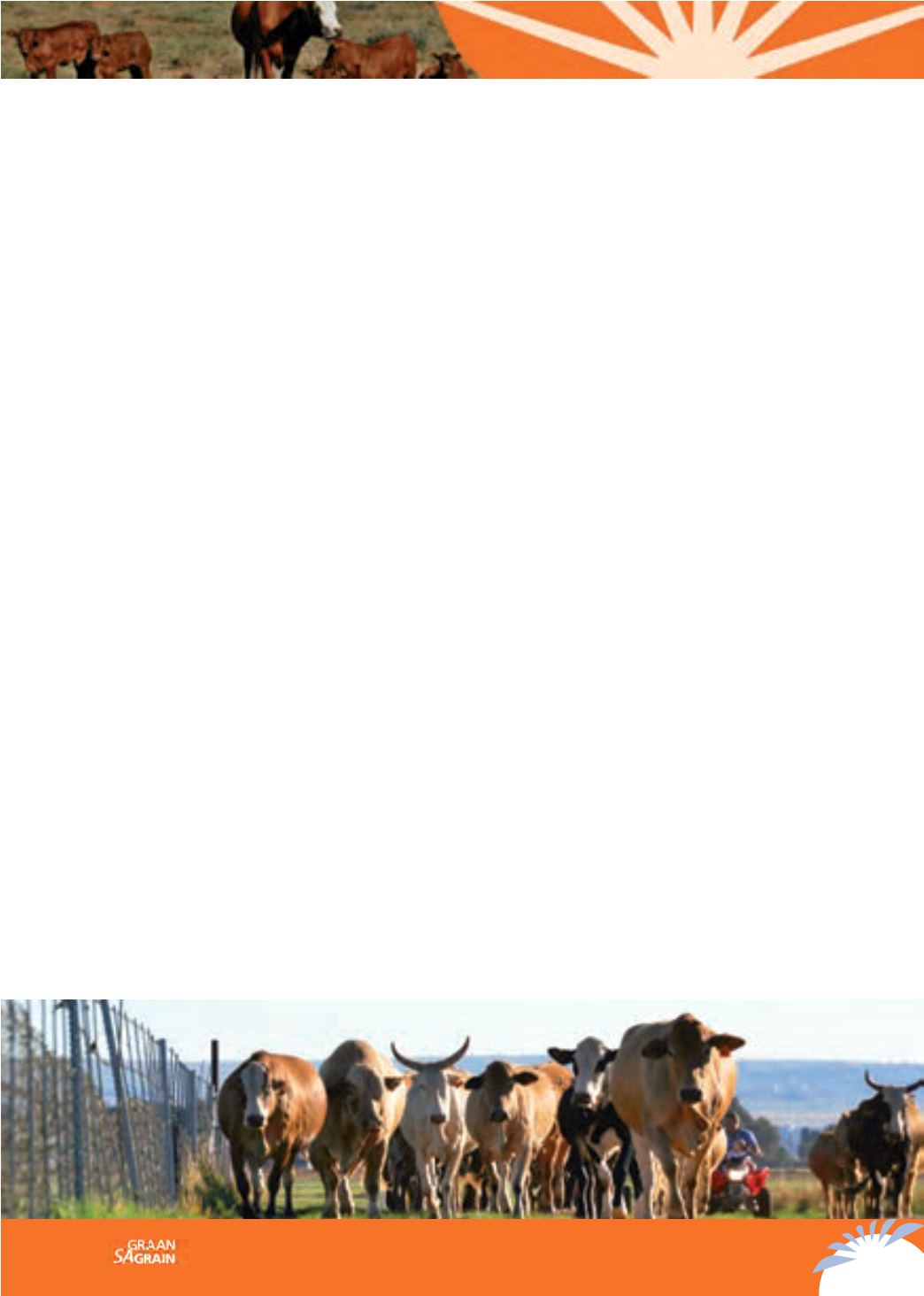

107
GRAANGIDS
2017
GRAIN GUIDE
It is more beneficial to select cows with a shorter gestation period. Their calves will be lighter at
birth, with no negative effects on the uterus. They will therefore become pregnant again more
easily. Cows that calve early in the calving season usually have a shorter pregnancy.
Management practices that benefit reproduction
• Mating of heifers
Heifers should be mated 21 days before the cow herd. They should all be pregnant before the
older cows are serviced. This constitutes a more beneficial use of herd bulls.
• Mating of first-calf cows
If heifers are mated earlier, they will calve earlier and it will be beneficial to mate them earlier
again, with the heifers. It has been found that if this is not done, the stronger sucking of a larger
calf places them in anoestrus. They therefore do not become pregnant. In herds where this
procedure was followed, the pregnancy among first-calf cows increased from 65% to 80%.
Milk production and weaning weight
A cow should produce sufficient milk so that the calf reaches at least 40% of her body weight. The
national average of all breeds is 42,9% – calculated from a weaning weight of 213 kg and a cow
weight of 496 kg at weaning age. The milk of the mother is responsible for 67% of the weaning
weight from natural pastures, and the growing ability of the calf is responsible for 33%.
In a normal season bull calves will be 7% heavier than heifer calves at weaning age. Heavier
calves require more milk than lighter calves because they drink more often and more aggressively.
Bull calves also drink more regularly than heifer calves.
Bull calves on average consume 0,6 kg more milk per day than heifer calves. Over a period of
210 days they therefore consume 126 kg more milk than heifer calves.
If we assume that bull calves weigh 240 kg on weaning and the mother produces 1 260 kg
of milk during 210 days of lactation, the cow produces a total of 1 500 kg of milk and meat
(weaner). If she weighs 500 kg, it is three times her own weight. These figures illustrate what an
asset the female animal is in the beef cattle industry.
The management of the cow herd and the heifer herd is therefore very important, because they
have to produce heavy calves and must also become pregnant again.
The beef cattle industry requires breeding cows and heifers that produce economically effectively
at high levels – with the correct functional appearance, beneficial adaptability, high reproduction
rate and beneficial milk production and weaning weight.
For more information, contact the writer at 083 637 0189.
DJ Bosman, agricultural consultant
4

















